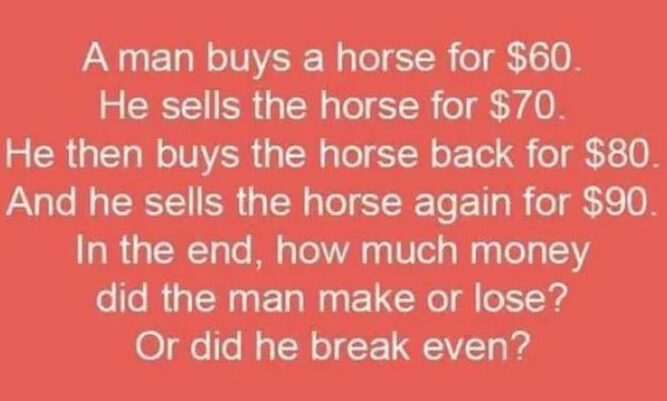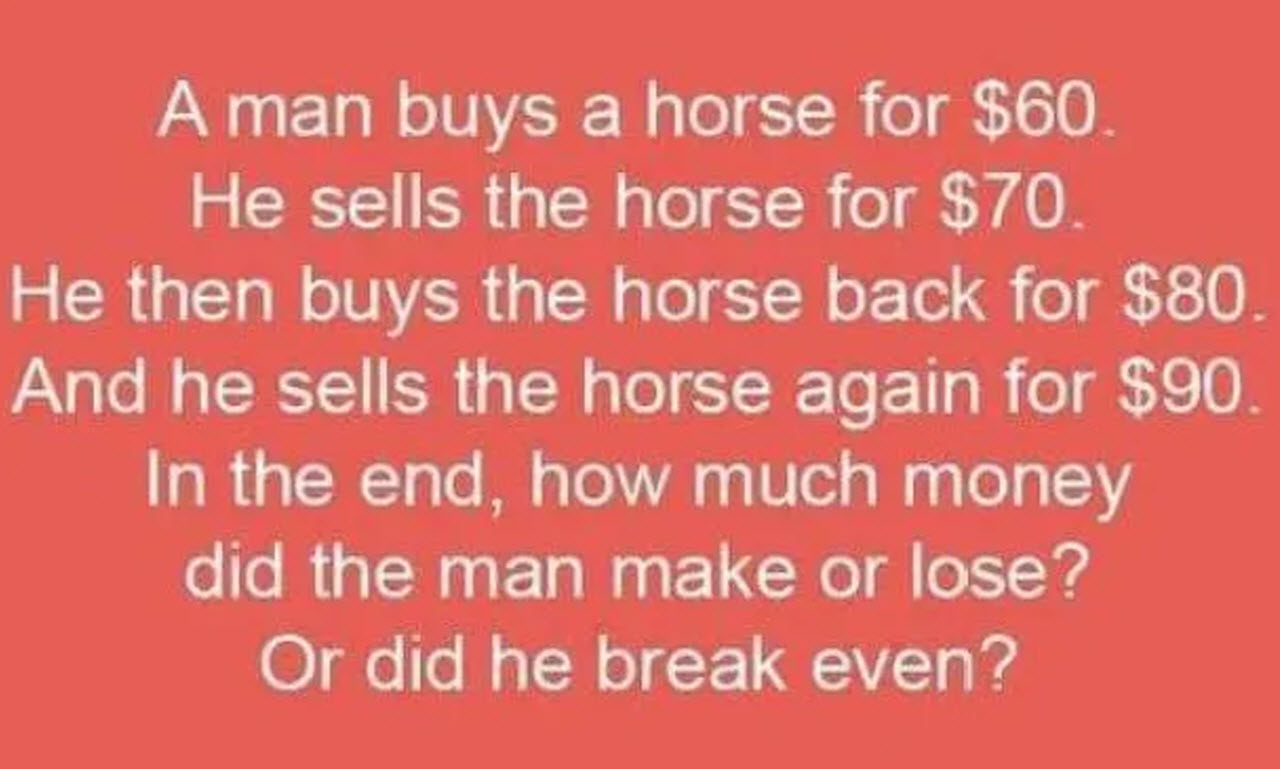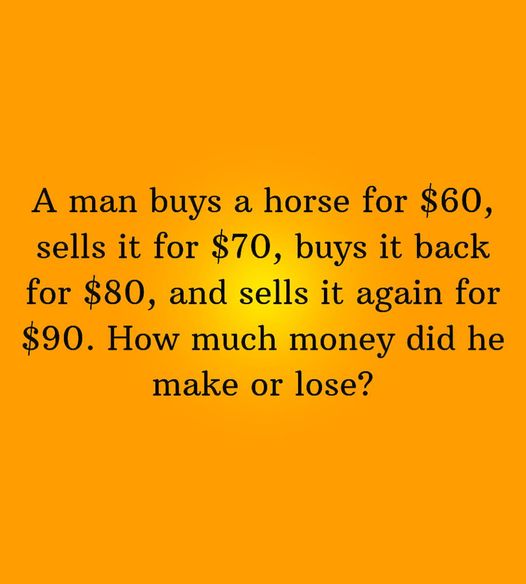When it comes to schooldays, we all have our favorites and, let’s face it, our absolute least favorites. And let’s be honest, math usually sits firmly in one of these camps, right? You either love it with a burning passion or avoid it like it’s the plague.

Now, here’s a math problem that’s been bugging people for years. And when I say years, I mean this bad boy has been unsolved for what feels like an eternity. Yet, it remains just as perplexing today as it was back in the day.

Let’s see if you’re up for the challenge: A guy buys a horse for $60, sells it for $70, buys it back for $80, and then sells it again for $90. Sounds simple enough, right? Spoiler alert: It’s not.
Most people take one look at this problem and freeze up like a deer in headlights. They overthink it, try to find some hidden complexity in what’s actually a pretty straightforward question. So, how about you give it a shot? And if you find yourself tangled in a web of numbers, no worries. The answer is coming up, so you can catch your breath.
Here’s the trick to cracking this nut: Do not overthink it. Yep, it’s all about keeping it simple, my friend.
Alright, pencils down. Ready for the big reveal? The secret here is to look at each transaction on its own terms.
-60 + 70 = 10
-80 + 90 = 10
Every time our horse-loving friend sold the horse, he made $10. So, put it all together: He pocketed a cool $20 overall.
So, how did it go? Did you hit the nail on the head or did this math conundrum have you chasing your tail?






